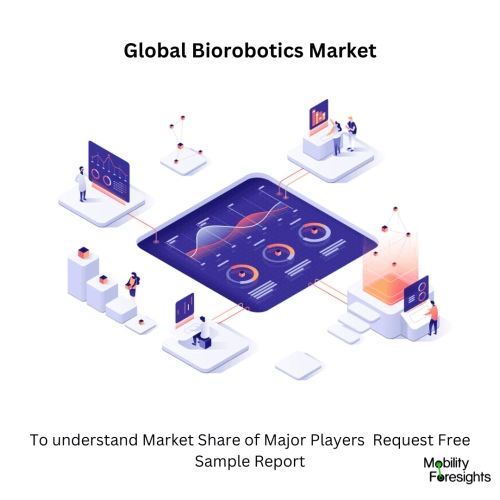
- Get in Touch with Us

Last Updated: Apr 25, 2025 | Study Period: 2024-2030
Manufacturers may design biologically inspired robots with improved and increased capacities over regular robots with a better grasp of biomechanics.

Biologically inspired robotics are more mobile and flexible than standard robots, and they frequently have sensory capacities. Bio robotic capabilities are frequently used to help compensate a weakness, either as fully functional robots or highly advanced prostheses; the latter is
another area where neural engineering and bio robotics collide, since both professions are necessary to first transmit and afterwards change it for the better.
| S No | Overview of Development | Development Detailing | Region of Development | Possible Future Outcomes |
| 1 | Bio Robots Can Now Reproduce And Experience Motherhood | In 2022, bio robots with reproductive capacities will be ready to embrace motherhood. | Global | This would enhance better Technological Controls |
| 2 | Biorobotics Teaches Machines to Sense and Respond to the World | Integrating biology with robotics would allow robots to adapt to changing surroundings by feeling, smelling, or hearing, opening up a wide range of applications. | Global | This would enhance better Technological Controls |
| 3 | Team builds first living robots | Xenobots created with artificial intelligence exhibit a whole new type of biological self-replication. | Global | This would enhance better Technological Controls |
| 4 | Demystifying the Integration of Nanotechnology in Biorobotics | These robots, which have been reduced to the size of living cells, have a wide range of potential applications in sectors such as environmental monitoring and medicine. | Global | This would enhance better Technological Controls |
| 5 | Next generation of swimming living robots can self-train | Researchers from Catalonia's Institute for Bioengineering (IBEC), led by Samuel Sánchez, have made an advances in the field of organic robotics by constructing innovative biobots founded on muscle tissue. | Global | This would enhance better Technological Controls |

Global Biorobotics Market is expected to gain market growth in the forecast period of 2024 to 2030. It is analyzed that the market is growing with a CAGR of XX.X% in the forecast period of 2024 to 2030 and is expected to reach USD XXXX million by 2030.
The rising frequency of chronic diseases, along with the growing senior population, advantageous reimbursement practices in developed nations, and increased expenditures in the development of sophisticated robotic platforms are all contributing to this trend.
The worldwide next-generation surgical robots industry, however, is being held back by a number of problems, including a scarcity of experienced specialists and a stringent regulatory environment. Several prominent players are working on enhanced surgical robots, putting miniaturisation, autonomy, and telesurgery capabilities to the challenge.
Procept Bio Robotics is a leading mobiliser of the Mobility solutions involving haptics solutions requirements in the market. The Aqua Beam Robotic system is a cutting-edge, image-guided surgical robotic platform that incorporates real-time, multimodal imagery, individualised
treatment scheduling, autonomous robotics, and heat-free waterjet ablation to remove prostatic material precisely and quickly. It provides Aquablation treatment, a less intrusive BPH procedure that tackles the safety and effectiveness issues with other surgical options.
Lawrence Technologies is part of the component manufacture trending companies in the current industry. Its latest addition has been brought in through The expanded human-robot interaction complex, set to open by the end of the year, will enable additional training insensing, wireless communication, 3D representation, scheduling, including directional management.
Researchers at LTU will learn how to create sensor and control systems for robotics that really can serve alongside or jointly with humans to expand or complement human capacity. The new facility will be the first of its kind in the Metro-Detroit area, and it will aid the university's efforts to form relationships with businesses in robotic production and medical treatment.